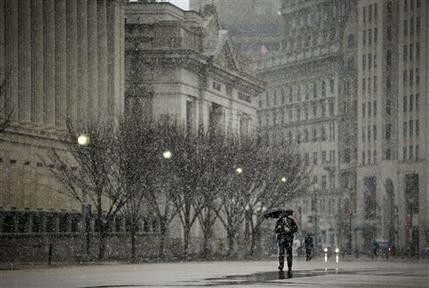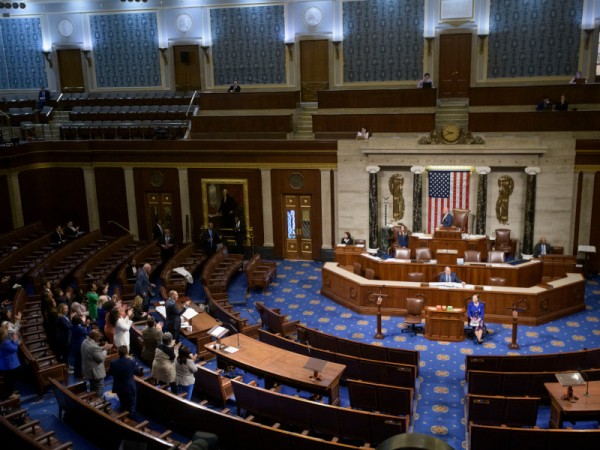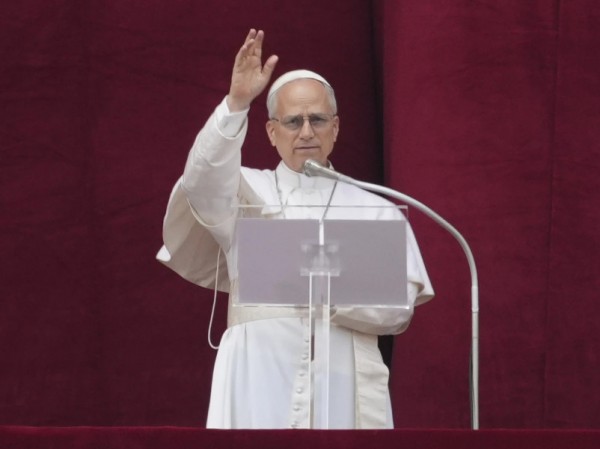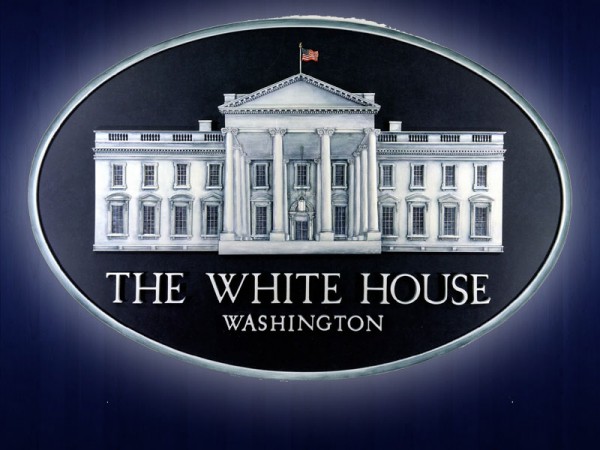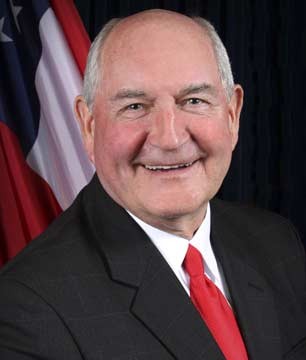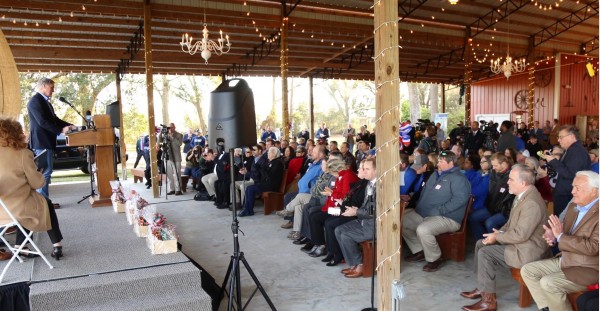WASHINGTON (AP) -- A winter storm marched into the Mid-Atlantic region Wednesday, dumping more than a foot of snow in some places and knocking out power to nearly 200,000 homes and businesses. The severe weather largely spared the nation's capital, yet the typically bustling city had all but shut down because officials didn't want a repeat of 2011, when a rush-hour snowstorm stranded commuters for hours.
The storm pummeled the nation's midsection on Tuesday, killing at least three people in weather-related traffic accidents. It was forecast to turn to the northeast on Thursday, bringing strong winds, more snow and the possibility of coastal flooding to New England.
In Washington, the storm dubbed the "snowquester" - after the wonky "sequester" term for $85 billion in federal budget cuts - did little harm as falling snowflakes rapidly melted amid warmer-than-expected temperatures.
"They just say that it might snow and the whole city shuts down," said Sheri Sable, who was out walking her two dogs in light rain and marveled at how even the dog park she frequents failed to open at 7 a.m.
There were worse problems elsewhere in the region, though.
Lashing winds blew off part of the roof of a Stone Harbor, N.J., condominium complex and Ocean City officials advised residents to move their cars to higher ground in preparation of possible flooding. Maryland's Bay Bridge, which connects Maryland's Eastern shore with the Baltimore-Washington region closed in both directions, because of high winds. A tractor-trailer overturned on the bridge.
In Virginia, Gov. Bob McDonnell declared a state of emergency and directed state agencies to let employees work from home, while about 50 National Guard soldiers were sent out to help clear roads. Utilities scrambled to restore power after fierce wind and heavy, wet snow snapped tree limbs and knocked out electricity to 170,000 customers in that state alone. Hundreds of car wrecks were reported.
In Richmond, most commuters appeared to be headed home by midday with the exception of Clint Davis, an attorney who was needed in in U.S. Bankruptcy Court.
"Unless they canceled court, I had to be here," said Davis, who was wearing a hooded slicker over his suit to shield himself from gobs of snow blown from trees. "I'll be here for two or three hours and come out to a snow-covered car."
Virginia's western suburbs, especially Loudoun County, saw accumulations of 9 inches. In Sterling, a glaze of slush and snow coated major roads and side streets, but traffic was relatively light and plow trucks came through repeatedly.
Many retailers were closed. Only a handful of customers patronized the Glory Days Grill. Carolyn Donahue was working from home and trekked out with her husband, Tom, for a lunch break without any trouble on slushy but passable roads.
"I don't consider this a big storm," he said.
Downtown Washington was unusually quiet. Officials eager to avoid a repeat of 2011 pre-emptively shut down federal offices and canceled public schools as forecasters projected snowfall totals of up to 10 inches. The roughly 300,000 federal employees inside the Beltway and in surrounding counties were treated to paid snow day.
"So far, knock on wood, we've dodged on this one," said D.C. Homeland Security director Chris Geldart. "We're keeping our fingers crossed that it remains the way it's been."
Some congressional hearings were postponed, but the House managed to approve legislation to prevent a government shutdown on March 27 and President Barack Obama was set to have dinner with GOP senators at hotel on Wednesday night.
Meteorologists said the air around Washington was simply too warm for the snow to stick.
The closure of many schools and offices helped ease traffic in the District of Columbia. Some Metro transit system bus routes were suspended or detoured, though trains were running on a normal schedule - albeit with an "anemic" passenger load, said spokesman Dan Stessel.
"You have your pick of seats on any Metrorail trains you board," Stessel said.
The Baltimore-Washington area's last major snowstorm struck Jan. 26, 2011. It hit Washington during the evening rush hour, causing some motorists to be stuck in traffic nearly overnight. It dropped 5 inches on Washington and 7.8 inches on Baltimore, knocked out power to about 320,000 homes and contributed to six deaths. The federal government later changed its policies to allow workers to leave their offices sooner or to work from home if major storms are expected.
There were at least three storm-related deaths. A semi-trailer slid off a snow-covered interstate in western Wisconsin, killing one person. A woman Indiana died when a semi-trailer plowed into her car after she lost control merging onto the highway in Putnam County, authorities said. And a man from Columbia City in northeast Indiana was killed when his snowmobile left the road, headed across a field and crashed into a wire fence enclosing a livestock pasture.
The storm brought around 10 inches of snow to weather-hardened Chicago on Tuesday, closing schools and canceling more than 1,100 flights at Chicago's two major airports.
Hundreds more flights were canceled Wednesday at Dulles and Reagan National airports in the Washington area, according to FlightAware.com.
In Pennsylvania and Ohio, many areas had 4 to 6 inches of snow, the National Weather Service said.
Still recovering from Superstorm Sandy, the Jersey Shore, along with other parts of the Northeast, prepared for another possible hit. The storm should bring rain and snow, but one of the biggest problems could be flooding in areas where dunes were washed away and many damaged homes still sit open and exposed. Those areas could get 2 to 4 inches of snow.
Friday
July 4th, 2025
7:31AM


